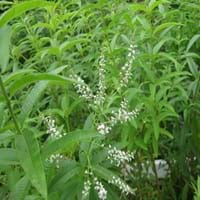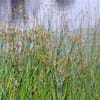Life Span
Perennial
Perennial
Origin
World/Pandemic
Argentina, Chile
Types
Not available
Aloysia arequipensis,Aloysia brasiliensis,Aloysia barbata
Number of Varieties
Not Available
Habitat
Grassland, Wet lands
Roadsides, Scrubs
USDA Hardiness Zone
7-11
8-11
Sunset Zone
H1, H2, 16, 17, 23, 24
Not Available
Habit
Spreading
Spreading
Minimum Height
Not Available
Minimum Width
Not Available
Flower Color
Green, Brown
White
Flower Color Modifier
Not Available
Not Available
Fruit Color
Not Available
Brownish Red
Leaf Color in Spring
Green
Green
Leaf Color in Summer
Green
Green
Leaf Color in Fall
Green
Green
Leaf Color in Winter
Not Available
Not Available
Leaf Shape
Grass like
Lance shaped
Plant Season
Spring, Summer, Fall
Spring, Summer, Fall
Sunlight
Full Sun, Partial Sun, Partial shade
Full Sun, Partial Sun
Growth Rate
Medium
Medium
Type of Soil
Clay, Loam, Sand
Clay, Loam
The pH of Soil
Acidic, Neutral, Alkaline
Neutral, Alkaline
Soil Drainage
Poorly Drained
Well drained
Bloom Time
Early Summer, Summer, Late Summer, Early Fall
Late Summer
Tolerances
Drought
Not Available
Where to Plant?
Container, Ground, Pot
Ground, Pot
How to Plant?
Bulbs, Divison, Rhizome division, Tubers
Seedlings, Stem Planting
Plant Maintenance
Medium
Medium
Watering Requirements
Do not let dry out between waterings, Keep ground moist, Keep the Soil well drained
Requires regular watering
In Summer
Lots of watering
Lots of watering
In Spring
Moderate
Moderate
In Winter
Average Water
Average Water
Soil pH
Acidic, Neutral, Alkaline
Neutral, Alkaline
Soil Type
Clay, Loam, Sand
Clay, Loam
Soil Drainage Capacity
Poorly Drained
Well drained
Sun Exposure
Full Sun, Partial Sun, Partial shade
Full Sun, Partial Sun
Pruning
No pruning needed
Remove damaged leaves, Remove dead branches, Remove dead leaves
Fertilizers
can go long without fertilizers
All-Purpose Liquid Fertilizer
Pests and Diseases
Red blotch
Insects, Red blotch
Plant Tolerance
Drought
Drought
Flowers
Showy
Insignificant
Flower Petal Number
Single
Single
Foliage Texture
Fine
Coarse
Foliage Sheen
Glossy
Glossy
Attracts
Birds, Butterflies, Flying insects
Not Available
Allergy
Itchiness, Skin rash
Skin irritation
Aesthetic Uses
Beautification, Bog Garden, Showy Purposes, Used for decorating walls, fences, gates, hedges, etc.
Not Available
Beauty Benefits
Not Available
Not Available
Environmental Uses
Air purification
Air purification
Medicinal Uses
No Medicinal Use
Antispasmodic, Febrifuge
Part of Plant Used
Not Available
Leaves
Other Uses
Container, Decoration Purposes, Florist trade and landscaping, Used as Ornamental plant
Repellent, Used as an insecticide
Used As Indoor Plant
Yes
No
Used As Outdoor Plant
Yes
Yes
Garden Design
Bog Garden, Container, Tropical, Water Gardens
Container, Herb, Vegetable, Mixed Border
Botanical Name
Cyperus papyrus
ALOYSIA triphylla
Common Name
Dwarf papyrus, Miniature papyrus
Lemon Verbena, Lemon beebrush
In Hindi
dwarf papyrus
Lemon Verbena
In German
Zwerg Papyrus
Lemon Verbena
In French
papyrus nain
Aloysia
In Spanish
papiro enano
Aloysia triphylla
In Greek
νάνος πάπυρο
Lemon Verbena
In Portuguese
papiro anão
Aloysia triphylla
In Polish
krasnolud papirus
Lemon Verbena
In Latin
P. papyrus
Lemon Verbena
Phylum
Tracheophyta
Magnoliophyta
Class
Magnoliopsida
Magnoliopsida
Family
Cyperaceae
Verbenaceae
Clade
Angiosperms, Commelinids, Monocots
Angiosperms, Asterids, Eudicots
Tribe
Not Available
Not Available
Subfamily
Not Available
Not Available
Number of Species
Not Available
Properties of Dwarf Papyrus and Lemon Verbena
Wondering what are the properties of Dwarf Papyrus and Lemon Verbena? We provide you with everything About Dwarf Papyrus and Lemon Verbena. Dwarf Papyrus doesn't have thorns and Lemon Verbena doesn't have thorns. Also Dwarf Papyrus does not have fragrant flowers. Dwarf Papyrus has allergic reactions like Itchiness and Skin rash and Lemon Verbena has allergic reactions like Itchiness and Skin rash. Compare all the properties and characteristics of these two plants. Find out which of these plant can be used as indoor plant. If you are interested to decorate your house and garden, find out aesthetic uses, compare them and select the plant which will beautify your surrounding. Along with beautification, try comparing medicinal and edible uses of Dwarf Papyrus and Lemon Verbena and you can choose the plant having best and most benefits.
Season and Care of Dwarf Papyrus and Lemon Verbena
Season and care of Dwarf Papyrus and Lemon Verbena is important to know. While considering everything about Dwarf Papyrus and Lemon Verbena Care, growing season is an essential factor. Dwarf Papyrus season is Spring, Summer and Fall and Lemon Verbena season is Spring, Summer and Fall. The type of soil for Dwarf Papyrus is Clay, Loam, Sand and for Lemon Verbena is Clay, Loam while the PH of soil for Dwarf Papyrus is Acidic, Neutral, Alkaline and for Lemon Verbena is Neutral, Alkaline.
Dwarf Papyrus and Lemon Verbena Physical Information
Dwarf Papyrus and Lemon Verbena physical information is very important for comparison. Dwarf Papyrus height is 20.30 cm and width 25.40 cm whereas Lemon Verbena height is Not Available and width Not Available. The color specification of Dwarf Papyrus and Lemon Verbena are as follows:
Dwarf Papyrus flower color: Green and Brown
Dwarf Papyrus leaf color: Green
Lemon Verbena flower color: White
- Lemon Verbena leaf color: Green
Care of Dwarf Papyrus and Lemon Verbena
Care of Dwarf Papyrus and Lemon Verbena include pruning, fertilizers, watering etc. Dwarf Papyrus pruning is done No pruning needed and Lemon Verbena pruning is done Remove damaged leaves, Remove dead branches and Remove dead leaves. In summer Dwarf Papyrus needs Lots of watering and in winter, it needs Average Water. Whereas, in summer Lemon Verbena needs Lots of watering and in winter, it needs Average Water.





